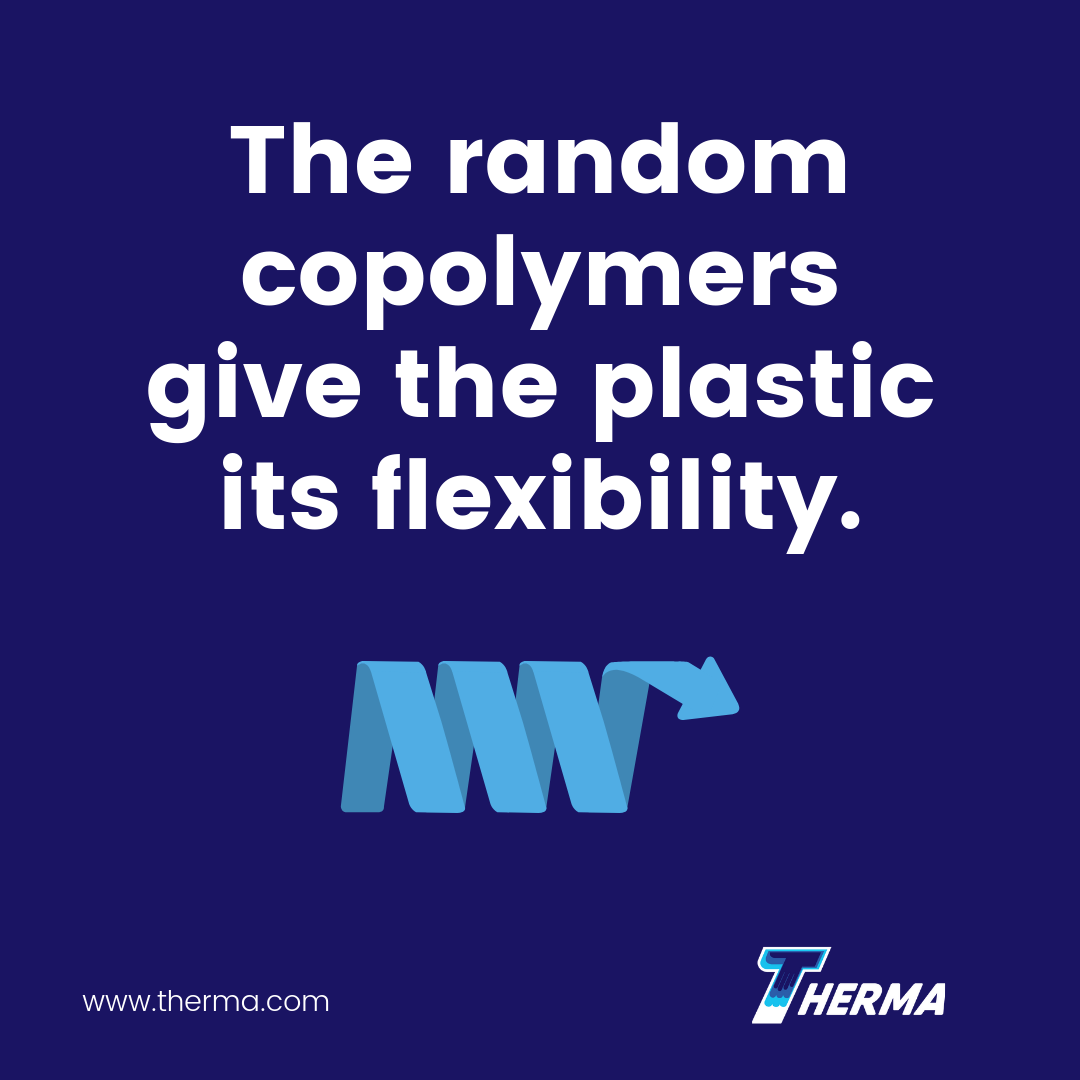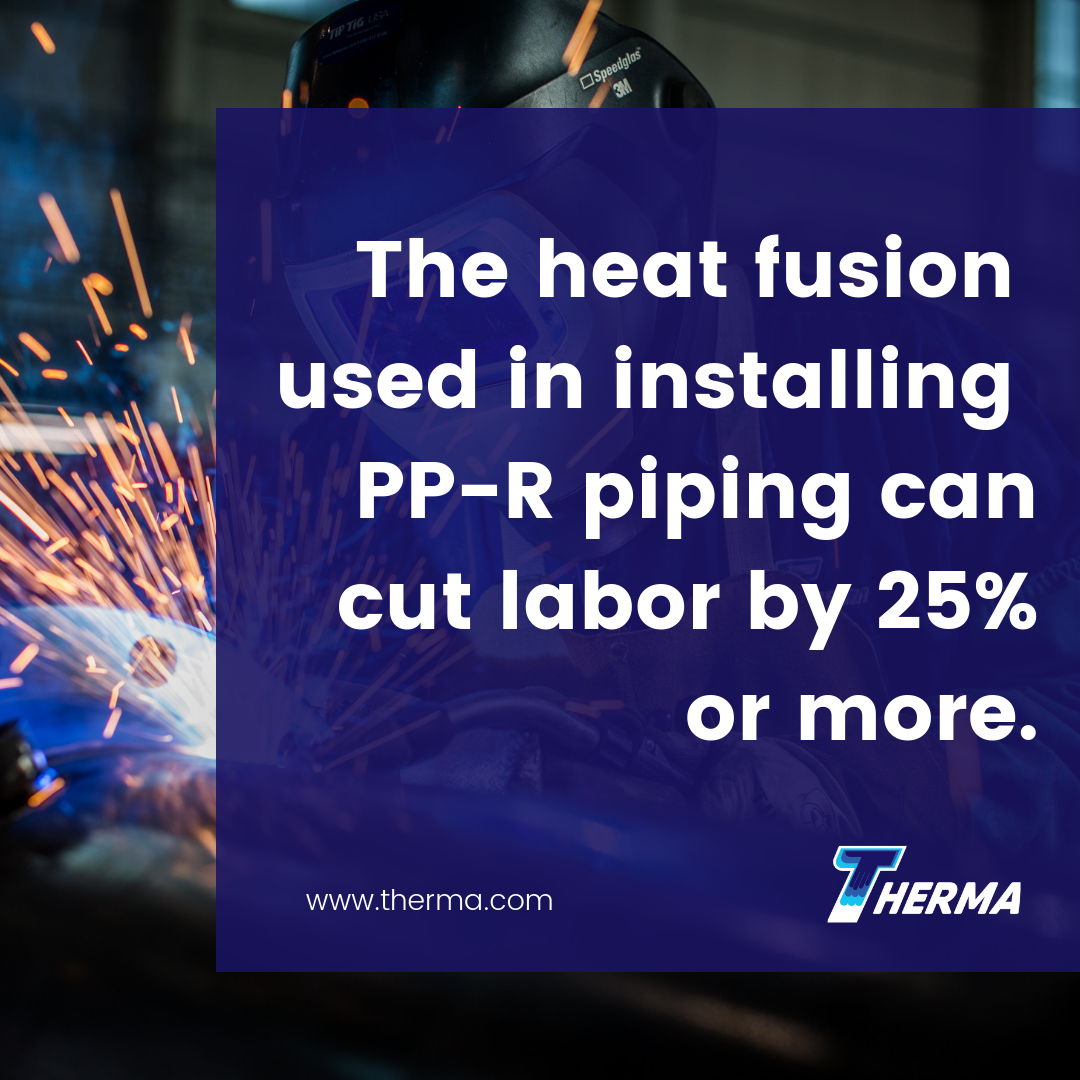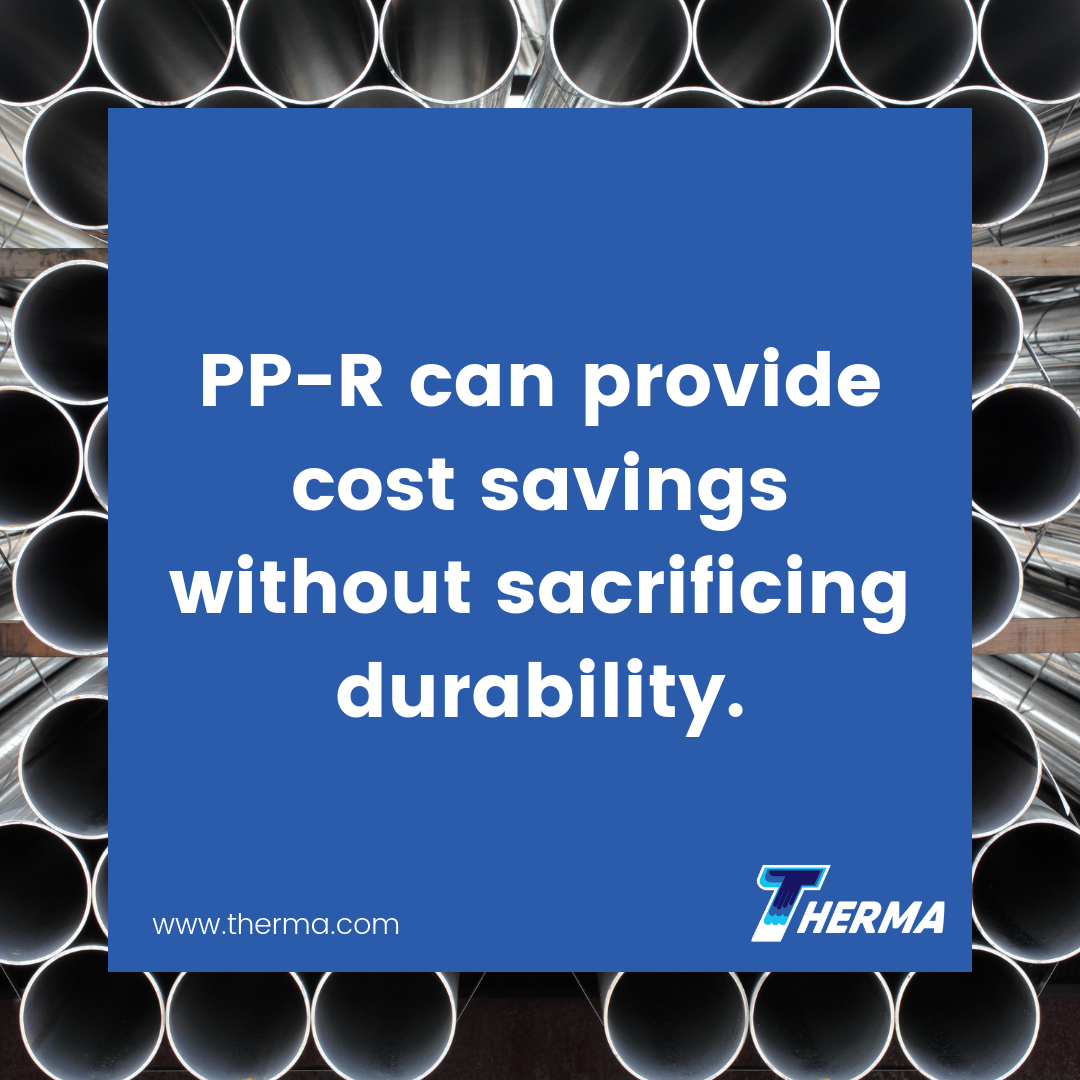The Steel Alternative: PP-R Piping a Stable Alternative?
By Patti Dees
PP-R (polypropylene random copolymer) pipes are durable and safe and provide benefits over steel or copper pipes in HVAC systems. PP-R has been used for decades because its material characteristics make it a viable and cost-effective option.
What Is PP-R?
PP-R is a thermoplastic. The plastic becomes soft when heated but solidifies as it cools, making it easy to mold or join with other PP-R products. PP-R is manufactured with randomly positioned copolymers, usually ethylene. The random copolymers give the plastic its flexibility. Proprietary formulas may include other materials to provide specific characteristics, such as improved UV light resistance. However, propylene is 50% or more of the composition.

Several material characteristics of PP-R can directly benefit HVAC applications:
- Joints can be heat-fused to produce a permanent bond.
- PP-R has a low thermal conductivity.
- Polypropylene is flexible and lightweight, but still durable.
- PP-R can handle acidic and basic solutions, with some exceptions.
- Since it is a thermoplastic and can be melted, it is recyclable.
- PP-R can be optically clear or opaque.
- The material has good dielectric properties.
- With no significant toxicity effects, PP-R is safe to work with and use.
PP-R Versus Copper and Steel
PP-R sounds great, but how does it compare to traditional copper and steel piping? Certain key factors give PP-R an edge when it comes to installation and maintenance costs.
First, the market for PP-R pipes is more stable than that for metal pipes. This improves budgeting for projects since cost estimates are not likely to fluctuate much. Stable markets also deter theft since there is less demand for plastic pipes.

Second, because PP-R is a thermoplastic, heat fusion is used to connect pipes and fittings. Heat fusion does not involve flame, which is better from a safety standpoint. Joints and fittings are placed anywhere along the pipe where they are needed. It is also faster than traditional welding and soldering. According to the piping manufacturer Aquatherm, the heat fusion used in installing PP-R piping can cut labor by 25% or more compared to the time it takes to install metal pipes.
Third, the low thermal conductivity of PP-R reduces potential heat loss due to thicker walled piping. Its thermal conductivity is significantly lower than that of metal pipes. PP-R pipes need less insulation, if any. Yet thinner walled PP-R pipes still perform well for radiant heating and cooling.
Last, PP-R pipes are naturally resistant to rust, scale and corrosion. They perform better in moist environments than so metal pipes. Even without water conditioners or descalers, PP-R pipes maintain flow rates over time. This reduces future maintenance. Pipes will not need to be cleaned in order to keep HVAC efficiency as close to installed conditions as possible.
Application Considerations
As with any pipe material selection, consider the end application.
In the case of polypropylene piping, temperature is important. Pressure ratings depend on the temperature of the fluid within the pipe. Higher temperatures correspond to lower operating pressures. Because PP-R pipes are so flexible, pipes need more support than traditional metal pipes. Maximum distance between supports depends on operating temperature and pipe diameter.
Also consider that polypropylene does not handle UV light well. Those interested in using UV-C in their HVAC system should paint the pipes for protection or limit PP-R piping to segments that will not be exposed to UV-C.

PP-R pipes are a great alternative to traditional copper and steel pipes for HVAC systems. Because of material characteristics such as low thermal conductivity and corrosion resistance, PP-R pipes can be used in ways that metal pipes cannot. PP-R can provide cost savings without sacrificing durability.
Biography:
Patti Dees is a chemical engineer turned writer. She spins her polymath nature to produce clear and informative pieces on technical topics.
References
- https://omnexus.specialchem.com/selection-guide/polypropylene-pp-plastic
- https://plasticpipe.org/building-construction/bcd-pp.html
- https://www.achrnews.com/articles/118940-the-advantages-of-polypropylene-piping-for-hvac-applications
- https://aquatherm.com/faq#Installation4
https://www.engineeringtoolbox.com/support-spacing-pp-pipes-d_793.html







